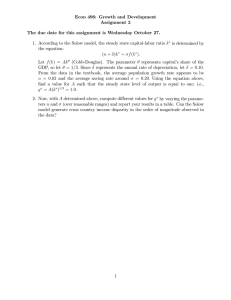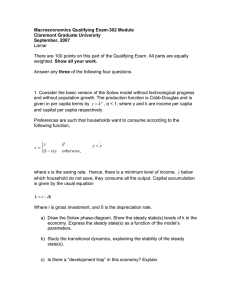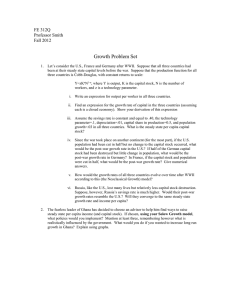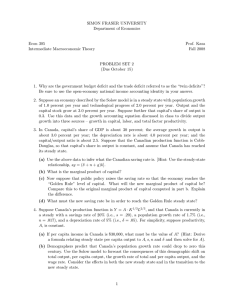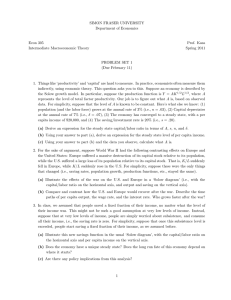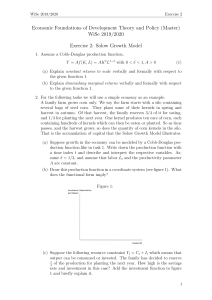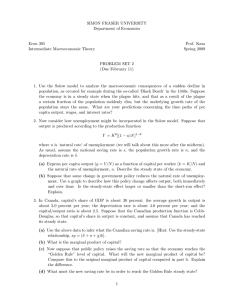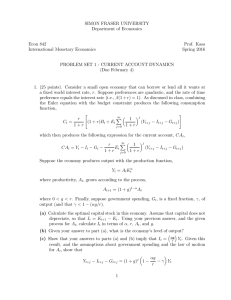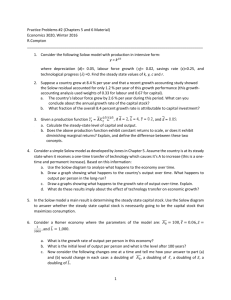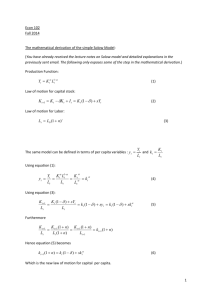Document 13569902
advertisement
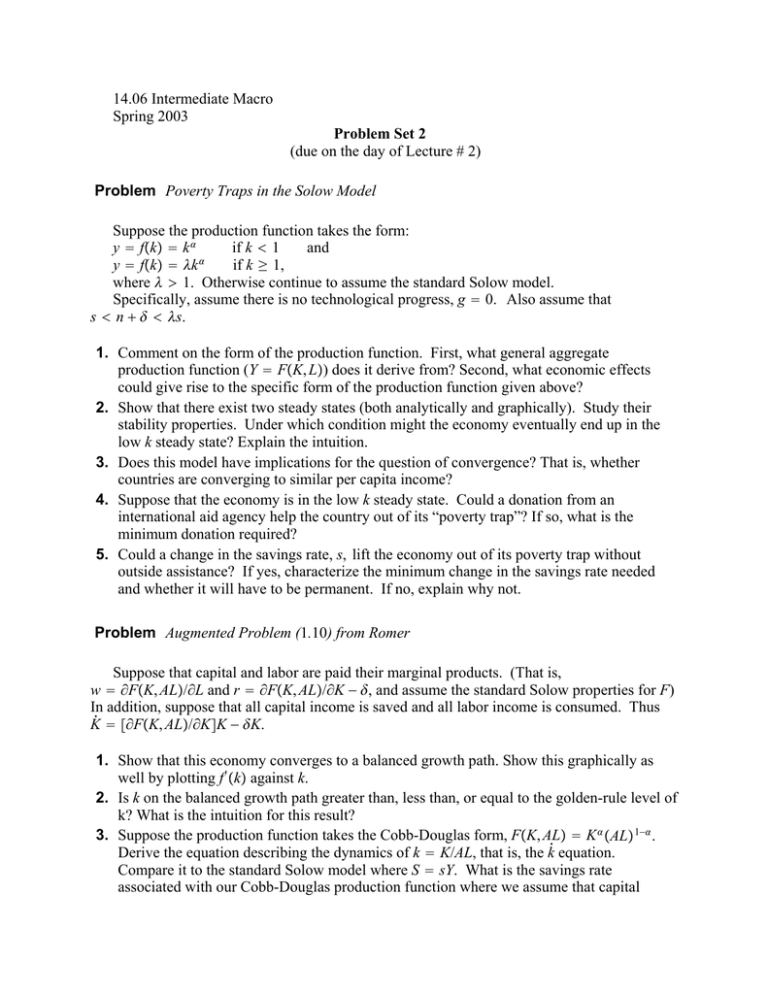
14.06 Intermediate Macro Spring 2003 Problem Set 2 (due on the day of Lecture # 2) Problem Poverty Traps in the Solow Model Suppose the production function takes the form: y fk k if k 1 and y fk k if k 1, where 1. Otherwise continue to assume the standard Solow model. Specifically, assume there is no technological progress, g 0. Also assume that s n s. 1. Comment on the form of the production function. First, what general aggregate production function (Y FK, L) does it derive from? Second, what economic effects could give rise to the specific form of the production function given above? 2. Show that there exist two steady states (both analytically and graphically). Study their stability properties. Under which condition might the economy eventually end up in the low k steady state? Explain the intuition. 3. Does this model have implications for the question of convergence? That is, whether countries are converging to similar per capita income? 4. Suppose that the economy is in the low k steady state. Could a donation from an international aid agency help the country out of its “poverty trap”? If so, what is the minimum donation required? 5. Could a change in the savings rate, s, lift the economy out of its poverty trap without outside assistance? If yes, characterize the minimum change in the savings rate needed and whether it will have to be permanent. If no, explain why not. Problem Augmented Problem (1.10) from Romer Suppose that capital and labor are paid their marginal products. (That is, w FK, AL/L and r FK, AL/K , and assume the standard Solow properties for F) In addition, suppose that all capital income is saved and all labor income is consumed. Thus K FK, AL/KK K. 1. Show that this economy converges to a balanced growth path. Show this graphically as well by plotting f k against k. 2. Is k on the balanced growth path greater than, less than, or equal to the golden-rule level of k? What is the intuition for this result? 3. Suppose the production function takes the Cobb-Douglas form, FK, AL K AL 1 . Derive the equation describing the dynamics of k K/AL, that is, the k equation. Compare it to the standard Solow model where S sY. What is the savings rate associated with our Cobb-Douglas production function where we assume that capital income is saved? 4. Assume for simplicity that there is no depreciation, that is 0 and return to a general form of the production function. Suppose the government decides to tax a farction t (constant) of capital income. The government then consumes the full amount of this revenue. For example, it digs holes in the ground, or eats more caviar, or (insert your favorite government wasteful consumption choice). Derive the equation for k in this case. How does steady state k compare to before? 5. Now suppose that the government decides to save all the revenue it acquires from taxing capital income. Derive the equation for k in this case. How does steady state k compare to before? Problem Empirical Exercise on Convergence This excercise is to familiarize yourself with some of the datasets and empirical techniques used in the growth literature. You are asked to reproduce a scatter plot similar to that in your textbook (Figure 1.7). Go to the Penn World Tables database website (http://www.bized.ac.uk/dataserv/penndata/penn.htm). You will obtain a data request form from which you can select which series, years and countries you would like. Choose the series “Real per capita GDP in current prices” for the years 1960-1998 for the 15 countries in Figure 1.7: Australia, Austria, Belgium, Canada, Denmark, Finland, France, Italy, Japan, Netherlands, Norway, Sweden, Switzerland, United Kingdom and United States. (omit Germany because data is not available in the earlier years). Take the log of real per capita GDP in 1960. Then take the difference of this log series between 1998 and 1960. This latter variable will be a measure of the growth of per capita real income in a given country over the 38 years. 1. Plot the growth rate against per capita real GDP in 1960 for the 15 countries. Do the results confirm the evidence for convergence? 2. Repeat the exercise in 1. for a few more countries of your choice (include a range of developing countries from Latin America, Africa, Asia). Do the results support those found above? Can the evidence be reconciled with the Solow model?
